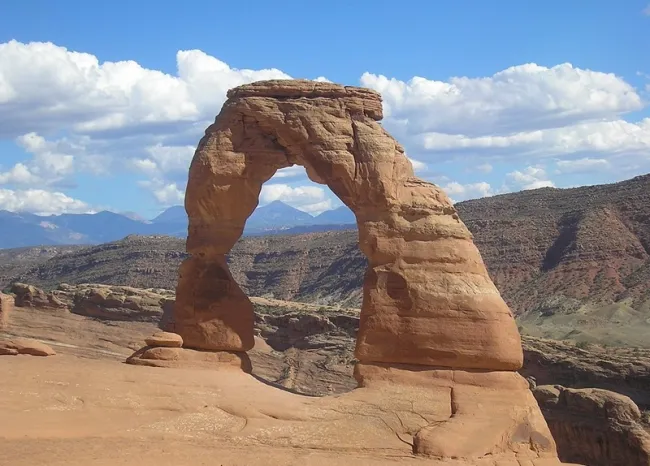
Arches National Park, located in eastern Utah, is renowned for its stunning natural rock formations, featuring more than 2,000 natural stone arches, towering spires, and giant balanced rocks. Covering over 76,000 acres, the park offers visitors a unique landscape shaped by millennia of geological forces. Arches National Park provides a remarkable opportunity to witness some of the world's most iconic natural structures in a relatively accessible setting.
History of the Park
Arches National Park was designated as a national monument in 1929 by President Herbert Hoover to protect the area's unique geological features. It was later upgraded to national park status in 1971. Native American tribes, including the Ute and Paiute, inhabited the region long before European settlers arrived. Evidence of their presence can still be seen through petroglyphs and other cultural artifacts. The park has become a symbol of the American West, attracting visitors from around the globe to experience its awe-inspiring beauty.
Main Features
The park's defining feature is its vast collection of natural arches, with Delicate Arch being the most famous. Other notable arches include Landscape Arch, which spans over 290 feet and is one of the longest natural stone arches in the world, and Double Arch, where two massive arches intersect. The Balanced Rock, a towering stone formation seemingly defying gravity, is another must-see attraction. The Windows Section offers a collection of arches that are easily accessible and photogenic.
Types of Trails
Arches National Park offers a wide variety of hiking trails, ranging from short, easy walks to more strenuous treks:
- Easy Trails: The Park Avenue Trail (2 miles round-trip), Balanced Rock Trail (0.3 miles round-trip), and The Windows Trail (1 mile round-trip) are great for beginners or those looking for a short adventure.
- Moderate Trails: Delicate Arch Trail (3 miles round-trip) is the most popular hike in the park, leading to the iconic arch itself. The Double Arch Trail (0.5 miles round-trip) is also a favorite.
- Strenuous Trails: The Devil’s Garden Trail (up to 7.2 miles round-trip) offers the opportunity to see eight arches, including the famous Landscape Arch.
Crowd Expectations and Annual Visitors
Arches National Park is one of the most popular parks in the U.S., receiving over 1.8 million visitors annually. The park is especially busy from March to October, with peak visitation occurring during the spring and fall. Expect crowds at popular attractions, particularly Delicate Arch and The Windows Section, where parking can be challenging. To avoid the heaviest crowds, consider visiting early in the morning or later in the afternoon.
Accessibility for Seniors
Arches National Park offers several opportunities for seniors to enjoy its beauty with minimal physical exertion. The Balanced Rock and The Windows Section both have relatively flat trails that are easy to navigate. Scenic driving routes allow visitors to see many of the park’s features without leaving their vehicles, making it an excellent option for those with limited mobility.
Accessibility for Wheelchairs
While many of the trails are rugged and rocky, there are a few areas that are wheelchair accessible. The Visitor Center is fully accessible, and the Balanced Rock trail features a paved path that offers great views of the formation. The Windows Section also provides a paved viewpoint where visitors in wheelchairs can enjoy the scenery.
Park Amenities
Arches National Park has a Visitor Center near the entrance, where guests can find restrooms, water, information, and a bookstore. Picnic areas are available throughout the park, offering places to rest and enjoy meals. There are no food or fuel services within the park, so visitors should come prepared with their own supplies.
Camping Facilities
The only campground within the park is the Devils Garden Campground, which offers 50 campsites, including a few group sites. The campground provides basic amenities such as picnic tables, fire rings, and vault toilets. Reservations are highly recommended, particularly during the busy season. There are also several campgrounds located outside the park in the nearby town of Moab.
Access to Lodging
Although there are no lodges or hotels within Arches National Park, the town of Moab is just a short drive from the park entrance and offers a wide range of accommodations, from budget motels to luxury hotels and vacation rentals. Moab also provides a variety of dining and shopping options, making it a convenient base for exploring Arches and other nearby attractions like Canyonlands National Park.
Pet-Friendliness
Pets are allowed in Arches National Park but are restricted to paved areas, parking lots, and designated campgrounds. Pets are not permitted on any of the park's trails or in the backcountry. If traveling with a pet, make sure to bring plenty of water and avoid hiking during the hottest parts of the day, as the desert heat can be dangerous for animals.
Best Months to Visit
The best time to visit Arches National Park is during the spring (March to May) and fall (September to November) when temperatures are mild, ranging from 60°F to 80°F. Summer temperatures can soar above 100°F, making hiking uncomfortable and even dangerous during the day. Winter offers cooler temperatures and fewer crowds, but some roads and trails may be icy or snow-covered.
Conclusion
Arches National Park is a stunning destination that showcases the natural beauty and geological wonders of the American Southwest. With its awe-inspiring arches, diverse hiking trails, and relatively accessible terrain, it offers something for everyone. Whether you're a seasoned hiker, a family on a road trip, or a traveler seeking a peaceful encounter with nature, Arches National Park is a place that will leave a lasting impression.



